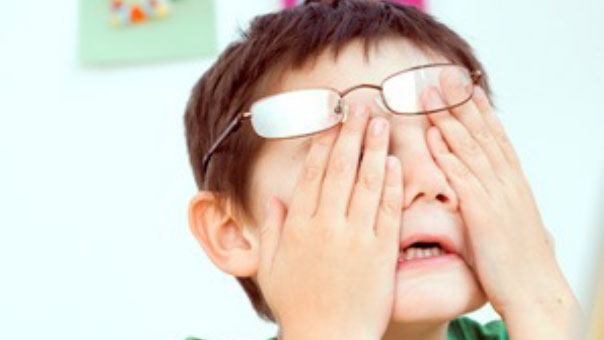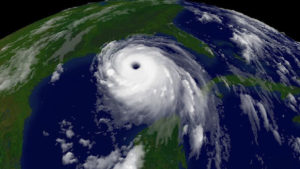
In its toxic form, stress affects behavior and physical health, and we need to translate this knowledge into public policies that can prevent it. The importance of children’s earliest years has long been recognized, but our understanding of the underlying science has taken a significant leap in the past decades. Studies regularly document the effects that a child’s earliest experiences can have in later life and adult health. There is a growing consensus among experts that a key mechanism linking childhood adversity to later health and well-being is the stress caused by early negative experiences. These early negative experiences manifest in neglect, emotional and physical abuse, and excessively harsh parenting.
In this context, “stress” doesn’t refer to a worried or anxious state of mind, but rather to the body’s physical responses to negative circumstances. When a situation is perceived as challenging or threatening, the body responds with a series of chemical reactions that affect heart rate, blood pressure, metabolism and other functions. These temporary adjustments help us adapt and survive, but when they happen too frequently or last too long they can produce lifelong chronic disease. For children, whose bodies and minds are still growing, a well-tuned stress response system is especially important. High levels of early stress have been linked to impaired behavioral and emotional development as well as numerous health consequences later in life, including high blood pressure, cardiovascular disease, obesity and diabetes. Such consequences cost our society in many ways.
Positive stress is a normal part of learning and development. As children learn to cope with frustration, overcome obstacles and confront challenges, they will experience a certain amount of stress. This level of stress is usually safe and manageable, especially if a child has the support of a healthy home environment. It is important to distinguish tolerable stress from toxic stress. Toxic stress is the result of serious events like a death in the family, a high-conflict divorce or a prolonged illness. It is potentially harmful, but sensitive and responsive parenting can protect children from long-term consequences. But in order for these stresses to be managed, parents and caregivers must be aware of the dangers, and must then be equipped with proper supportive response patterns. As educators, working hands on with children and families, it is our collective responsibility to educate on how to manage these inevitable life events one of our highest priorities.
In contrast to tolerable stress, toxic stress refers to persistent, unhealthy amounts of stress caused by chronic stressful conditions without the protective benefits of healthy caregiving. These stresses can eventually cause permanent damage. I truly believe that by coming together has a community and joining forces, the ability to reallocate resources toward the prevention of toxic stress in children and families is endless.
Promoting public health and reducing health disparities require solutions that target children’s earliest years is so critique. It is clearer than ever before that health, achievement and success have their roots in the first months and years of life. Reducing adversity and stress in early childhood should be a key goal of efforts to improve the lives of children. Stress can provoke negative effects in children just as it does with adults. Family stress can be a catalyst for a variety of symptoms in children, according to Novella Ruffin of Virginia State University, including “bed-wetting, upset stomach, irritability, nightmares, lying, withdrawal from activity, change in activity level, poor sleep or eating habits, teeth grinding, or decline in school achievement.” Parents and other caregivers who are alert can take proactive steps to alleviate the harmful effects of stress. This is why being so hands on and present with children is a must, we cannot fulfil our duties as children’s activist if we do not do so.
Stress, according to Ruffin, is “the body’s reaction to a physical or emotional situation that causes imbalance in a person’s life.” Family stresses which can create imbalance and thus have negative effects upon children include a parent’s loss of employment, divorce, fights, physical or emotional abuse, death of loved ones, the arrival of new siblings or environmental changes. Working parents must also be mindful that although their children are not exposed to direct and obvious catalysts, lack of parental interaction and feelings of isolation can also produce stress for children.
Parents and other caregivers should be alert to abnormal changes in a child’s behavior. They may have cause for concern if a child who is normally friendly and outgoing, for example, becomes isolationist or conversely begins lashing out at peers. Caregivers must investigate if they notice that otherwise unremarkable situations and comments trigger emotional outbursts or disproportional retaliation from a child. Children under stress may also hit, kick, bite or tattle on other kids. Additional symptoms can include crying, bed wetting, stuttering, appetite loss or laziness, according to Ruffin.
Parents and caregivers must be careful about the information and conversations shared in the presence of children. It’s true that it can sometimes be helpful to children to witness “real life” and see their parents or other adults working through tough issues, if this interaction is healthy and productive. However, parents and caregivers must remember that children also lack the skills, education and life experience to process some “adult level” information or situations.
As this paper earlier mention, a person who has an impact on the child’s life has the ability to determine how much impact they will have and what kind. Though a parent can be a “caregiver” that provides for the child, financially. There are so many more factors that goes into the actual carrying of the child. Physically and mentally being there for a child is key. Being able to create that connected relationship with the child not only creates a short term advantage for the foundation, but long term as well. The benefit of a sold parent child, teacher child, teacher parent, and so on is amazing.
There are multiple steps that can happen to assist a child during stressful times. First, acknowledge the child’s feelings. Listen to what they have to say and do not minimize or dismiss it. You can also equip your child by helping formulate descriptions of what he or she is feeling. Ruffin suggests, “Teach children names or words for their feelings and appropriate ways to express them.” Parents and caregivers can also create an affirming environment for kids. This can be done by praising and rewarding positive behaviors rather than simply focusing on coercive punishments to manage negative ones. Another step is to aid kids through the use of stories, drawing, play-acting or “pretend” conversations between toys. For example, ask a child to draw a picture of his home and then ask him why there are dark clouds, or why his parents are not home or how come the characters in the picture are all frowning. Try to under the image from the child’s perspective, this will truly help make understanding more effective for both parties.
The National Child Traumatic Stress Network, Resources for Parents and Caregivers. 2016, Retrieved from http://www.nctsn.org/resources/audiences/parents-caregivers
University of Minnesota Extension, Dealing with Stress. 2013, Retrieved from https://www.extension.umn.edu/family/live-healthy-live-well/healthy-minds/dealing-with-stress/parental-stress/
American Psychological Association, Identifying Signs of Stress in Your Children and Teens. 2017, Retrieved from http://www.apa.org/helpcenter/stress-children.aspx





No comment yet, add your voice below!